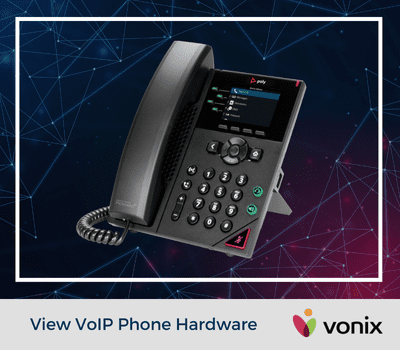What are Integrated Business Voice Solutions?
We know, this seems like a lot of buzzwords put together. When you’re talking about integrated solutions, it generally refers to tools that work together and speak to one another. For instance, a business CRM sales platform might integrate into their email platform, so that new sales contacts become email contacts at the same time.
An integrated business voice solution means that your calling is integrated across devices, so you can make calls from your computer, mobile phone, or desk phone. Integrated voice is only available as a VoIP feature and not through landlines or on-site phone systems, as it is supported through the internet. Integrated business voice gives more flexibility to employees who won’t need to be at their desk to take a call. It also helps facilitate conferences with multiple attendees.
Benefits of Switching to Integrated VoIP
1. Lower Cost
Because VoIP connects through your existing internet connection, it’s generally less expensive to install and maintain than traditional landlines. Instead of needing an entirely different system and physical wiring, integrated VoIP simply connects online. And, if your employees need mobile phone plans to make business calls, you can instead just use data to connect.
2. Easier Setup
Since you no longer need the extensive hardware installation, VoIP setup is a breeze. Often, your provider can just send you the phone hardware. Plug them in at your desk, and you’re ready to make calls. Your phone provider can remotely help manage users and set up features like phone trees before you even receive the phones. That means that you’ll be up and running in minutes.

3. Reduce IT Dependency
Because your managed VoIP provider handles the phone network, hardware, and software, you no longer need to pay someone on-site who specializes in the phone systems. This will free up your IT team to work on other projects or let you scale back your dependencies on an outside IT company.
4. Access Integrated Features
Landlines, like all traditional phone lines, are extremely limited in what they can accomplish. Because integrated VoIP connects through the internet, you get access to voice menus, transcribed voicemail to text and email, custom hold music, eFax, call recording, and call routing. It’s easy to connect multiple locations through the same phone system. Plus, you’ll have access to an online portal to view helpful analytics such as call times, history, calls by user, and more.
5. Increase Mobility
You’ll never miss another call because you stepped away from your desk. Whether you use call forwarding or a softphone app, you’ll be able to receive and make calls using any mobile device. This makes it easier for employees to work from home or from any location that has a data connection anywhere in the world.

How to Switch to VoIP
Anytime you need to change providers, there can be some fear over what kind of undertaking you’re looking at. Here are the first steps to take to make the switch:
- Find out if you are currently in a phone contract
- Often, after a certain number of years you’ll be renewed month-to-month and not annually, so it’s easier to leave than you think
- Test your network connection to determine if your system is ready for VoIP
- Your new voice provider can help you get prepped – often, you’ll just need a new router
- Get a quote based on your number of users, phone hardware, and feature needs
- Pay for your first month and equipment
- Schedule your installation date and start calling










